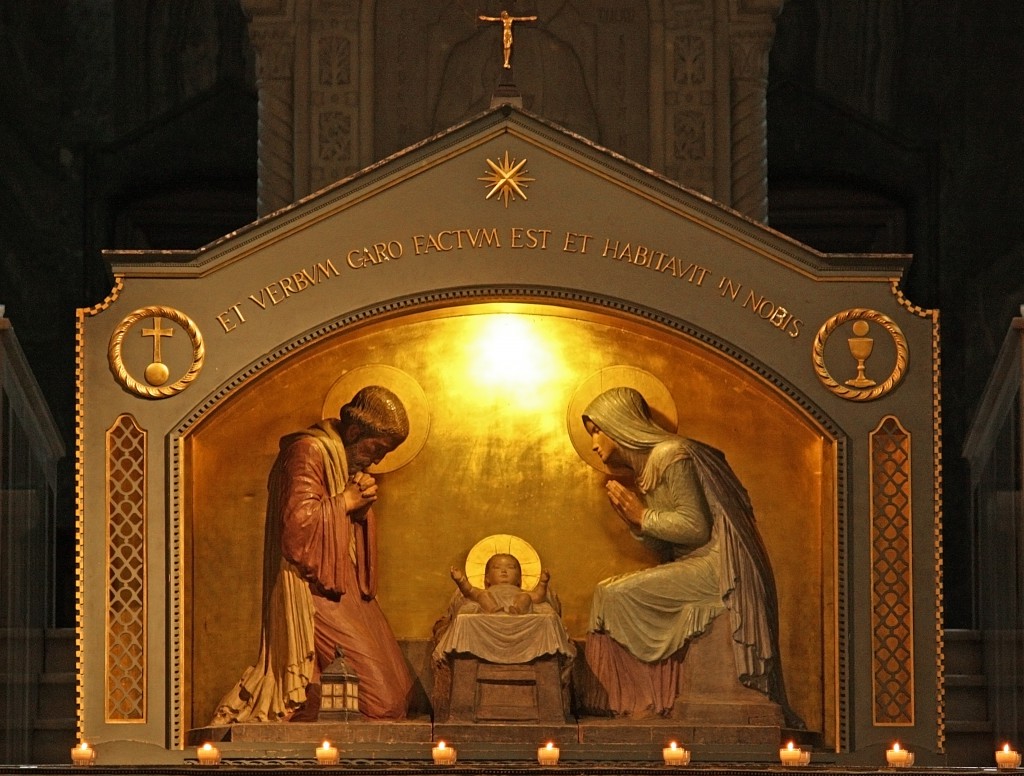
I have three questions on the birth of Christ. Why do we say he was born in a stable? What are swaddling clothes? And what exactly was the sign announced by the angel?
The birth of Christ has a number of extraordinary aspects and your questions touch on some of these.
The first is that the Son of God, the King of Kings, was born in such humble surroundings. Surely God in the flesh should have been born in a palace, a castle, or at least a dignified inn.
And he should have been laid in a bed or a cot, not in a manger, a feeding trough for animals.
But God’s ways are not man’s ways, and God clearly wanted it to be that way in order to teach us something.
From the humble circumstances of Christ’s birth, we learn, in the words of the Catechism of the Catholic Church, that “To become a child in relation to God is the condition for entering the kingdom. For this, we must humble ourselves and become little” (CCC 526).
And from the poverty of the stable we learn that the possession of material wealth, with all its attending comforts, is not as important as the possession of God. Mary and Joseph, while poor in the material sense, were truly rich in having the very Son of God, the King of Kings, in their family.
Returning to your questions, why does Christian tradition, and even the Catechism, say that “Jesus was born in a humble stable” (CCC 525) when nowhere in the Scriptures do we find any explicit mention of it? Indeed, St Matthew limits himself to saying that “Jesus was born in Bethlehem of Judea” and, significantly, when he tells of the arrival of the magi he says that “going into the house they saw the child with Mary his mother” (Mt 2:1, 10).
The reference to a house can be explained by the possibility that after the birth in a stable, Mary and Joseph were finally able to find a house in which they lived at least until the presentation of Jesus in the Temple of Jerusalem 40 days after his birth.
St Luke doesn’t mention a stable either but he does say that after Jesus’ birth Mary wrapped him in swaddling clothes “and laid him in a manger, because there was no place for them in the inn” (Lk 2:7).
Since a manger is a feeding trough for animals it has always been assumed that Jesus was born in some sort of stable.
Pope Benedict XVI, in his book Jesus of Nazareth – The Infancy Narratives, comments on the significance of the manger: “The manger is the place where animals find their food. But now, lying in the manger, is he who called himself the true bread come down from heaven, the true nourishment that we need in order to be fully ourselves. This is the food that gives us true life, eternal life. Thus the manger becomes a reference to the table of God, to which we are invited so as to receive the bread of God” (p 68). We might add that the name Bethlehem means precisely “house of bread”.
But why do we associate the birth of Christ with the actual presence of animals, in particular an ox and an ass? Pope Benedict XVI, acknowledging that the Gospel makes no mention of animals, writes: “But prayerful reflection, reading Old and New Testaments in the light of one another, filled this lacuna at a very early stage by pointing to Isaiah 1:3: ‘The ox knows its owner, and the ass its master’s crib; but Israel does not know, my people do not understand” (Ibid, p 69).
And what are swaddling clothes? In ancient times, as often seen in icons of the nativity scene, the newborn child was customarily wrapped round and round with a narrow band of cloth like a mummy.
It was thought this would help the limbs to grow straight.
Pope Benedict comments: “The child stiffly wrapped in bandages is seen as prefiguring the hour of his death: from the outset, he is the sacrificial victim… The manger, then, was seen as a kind of altar” (Ibid, p 68). The swaddling clothes can be seen too as a reference to Christ’s kingship and his descent from King Solomon, the son of King David. Solomon, in the book of Wisdom, writes: “I was nursed with care in swaddling clothes. For no king has had a different beginning of existence; there is for all mankind one entrance into life, and a common departure” (Wis 7:4-6).
Finally, why did the angel say to the shepherds, “And this will be a sign for you: you will find a baby wrapped in swaddling clothes and lying in a manger” (Lk 2:12).
Certainly, a baby lying in a manger would be a sign, since this was most uncommon.
But, probably, since the angel mentioned the swaddling clothes specifically, this too must have been part of the sign.
So there is much symbolism and much to be learned from these simple aspects of Christ’s birth in Bethlehem.